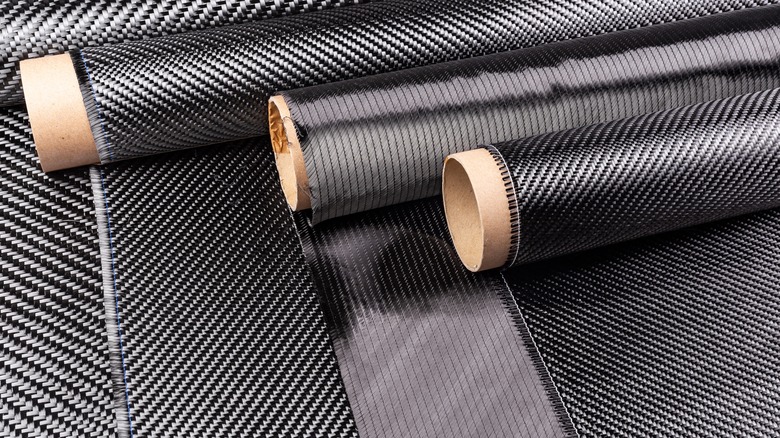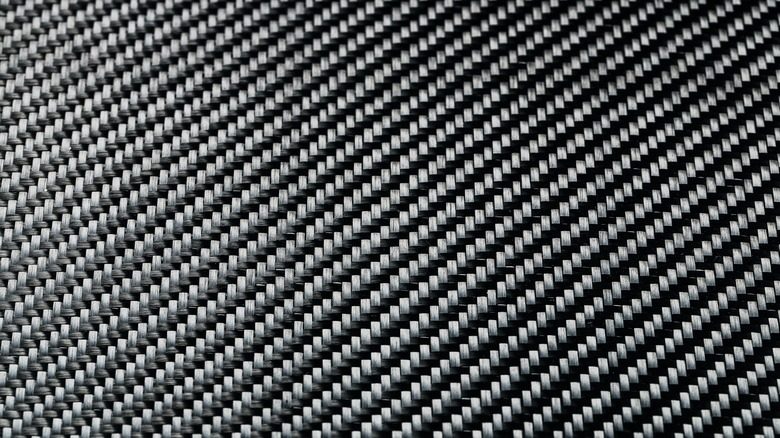Carbon fiber’s blend of incredible strength and low weight has revolutionized modern engineering. Today, you see it in everything from wind turbines and airplanes to carbon fiber car parts and sports gear. Its advantages over materials like steel and aluminum mean that industries are desperate to find new ways to incorporate it into their builds. But, despite its popularity, carbon fiber has a number of serious drawbacks that could hold it back from a sustainable future.
Advertisement
For starters, the environmental toll of carbon fiber is staggering. The carbon fiber production process is notoriously energy-intensive, using up to 900 megajoules per kilogram, which is far more than the energy required to produce steel or aluminum. Worse yet, the material is difficult to recycle. Nearly a third of carbon fiber sheets are discarded during manufacturing, and most products made with carbon fiber eventually end up in landfills. Once bonded with resin and cured, carbon fiber can’t be melted down and reshaped. That makes reclaiming usable fibers both difficult and inefficient without high heat or aggressive chemicals… which have problems of their own. The result? An enormous amount of waste. Could we see carbon fiber replaced with another, better material? Signs seemingly point to yes.
Advertisement
Carbon fiber’s health hazards and performance issues
Environmental concerns are another part of the carbon fiber dilemma. When sanded, cut, or exposed to high heat or chemicals, carbon fiber releases microscopic airborne particles. These fibers are similar in size and shape to asbestos. That means the fibers can lodge themselves deep in the lungs of those who breathe them in. While long-term health effects are still being studied, the unsettling parallels to asbestos exposure raise fears that carbon fiber dust could one day be linked to serious respiratory diseases and even death.
Advertisement
There’s also the performance ceiling to consider. Despite being hailed as a miracle material, carbon fiber hasn’t seen significant improvements in strength for decades. This is largely due to the sensitive nature of the material: If its structure is compromised during manufacturing, the fibers are permanently misaligned and damaged for the rest of the product’s lifetime. Cost is another significant barrier. Carbon fiber is still ten to twenty times more expensive than metals like steel or aluminum, which holds it back from being more widely adopted in cost-sensitive industries like automotive manufacturing.
Galvorn is a promising alternative to carbon fiber
Researchers and startups are looking for alternatives to match or exceed the performance of carbon fiber without all the downsides. One of the most promising contenders is Galvorn, a carbon nanomaterial with carbon fiber-like properties. Lighter than carbon fiber yet stronger than steel, Galvorn is flexible, conducts electricity, and is also more sustainable. DexMat, the company behind Galvorn, also claims that the manufacturing process uses fewer steps and less energy, and its lifecycle impact is carbon-negative. The company projects that the material will offset two to three gigatons of carbon dioxide annually within the next few decades.
Advertisement
Galvorn also avoids the health hazards that plague carbon fiber. Being cut-resistant and biocompatible, it has far fewer risks to workers and end-users alike. And because it’s recyclable, Galvorn has the potential to fuel a more circular economy for high-strength composites. Of course, wide-scale replacement won’t happen overnight. Carbon fiber’s dominance has been built over decades, and industries are deeply invested in the current supply chains and manufacturing infrastructure. Nevertheless, the direction is clear. As environmental regulations tighten, costs rise, and health concerns mount, the push for better alternatives will accelerate, and materials like Galvorn stand out as a viable next step.
Advertisement




/cdn.vox-cdn.com/uploads/chorus_asset/file/23262657/VRG_Illo_STK001_B_Sala_Hacker.jpg?w=380&resize=380,220&ssl=1)




